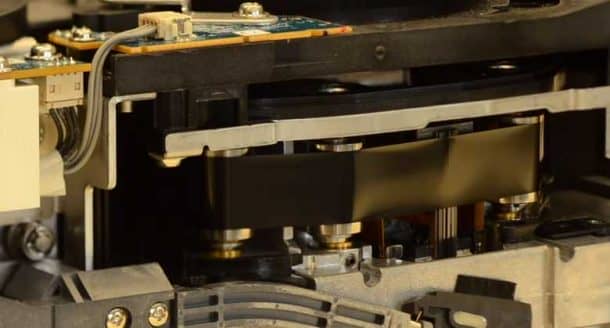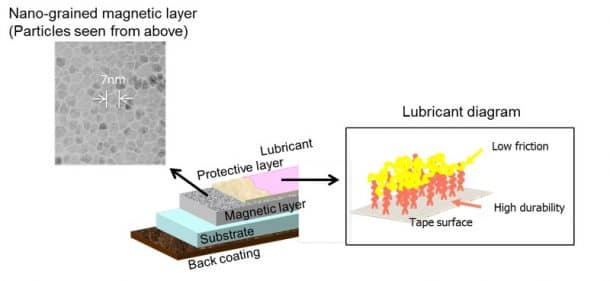The standard Secure Digital (SD) card was introduced at the beginning of 21st century. Back then, 64 MB cards were considered quite the big thing. Fast forward to about 16 years from then; we are now packing massive 1TB of data in the tiny gadgets, and this tech advancement is not stopping here. IBM Researchers and Sony have developed a magnetic tape that can store 330 terabytes of data in a small cartridge package.
Sony Storage Media Solutions partnered with IBM to create the magnetic technology that stores 201 gigabits per square inch. This means that a cartridge that fits in the palm of your hand can pack 330 terabytes of uncompressed data. This breakthrough is a significant step ahead of the conventional technology that offers only 15 TB per cartridge.
Sony’s new magnetic tape technology makes use of a lubricant to achieve the 201 gigabits per square inch of storage. The first prototype was created using IBM’s newly developed write and read heads, advanced servo control technologies, and signal-processing algorithms.

The first tape that IBM created in 1952 could store data at the rate of 6.1 kB per second while allowing the aerial density of 1,400 bits per square inch. In the sixty years that followed, IBM research has reached a limit where IBM tape storage holds the fifth record title since 2006.
An IBM fellow at Zurich laboratory in Switzerland, Evangelos Eleftheriou says, “Tape has traditionally been used for video archives, backup files, replicas for disaster recovery and retention of information on premise, but the industry is also expanding to off-premise applications in the cloud. While sputtered tape is expected to cost a little more to manufacture than current commercial tape, the potential for very high capacity will make the cost per terabyte very attractive, making this technology practical for cold storage in the cloud.”
An IBM research scientist, Dr. Mark Lantz, explained the working of technology and said, “Sputtered tape uses several layers of thin metal films that are coated onto the tape using vacuum sputter technology. That’s similar technology used for manufacturing integrated circuits.”
The reduction in the gap between magnetic tape and head allows for higher data density, but this also leads to a greater friction at contact points. If this friction is reduced considerably, the tape runs smoothly along the magnetic head to allow higher reading and writing capacity at a greater speed. Sony developed the lubricant that was applied between the tape and the magnetic head to reduce this friction. It also helps to create a very durable bond between the magnetic layer of tape and the lubricant.

Dr. Lantz looks at a much brighter future of these developments and says, “This demonstrates the potential to continue scaling tape technology basically at historical rates of doubling the cartridge capacity every two years for at least the next 10 years. That’s really good news for our customers that could rely on tape technology. It’s kind of an integral part of their storage infrastructure to really preserve their data in a cost-effective manner.”



Attn. You referenced the SD card as having been introduced at the beginning of the 20TH century, it was introduced at the beginning of the 21ST century.
I think you’ll find that the SD card was introduced at the beginning of the 21st Century, not the 20th (i.e.1900)!
we cant read that fast.. slow down your videos